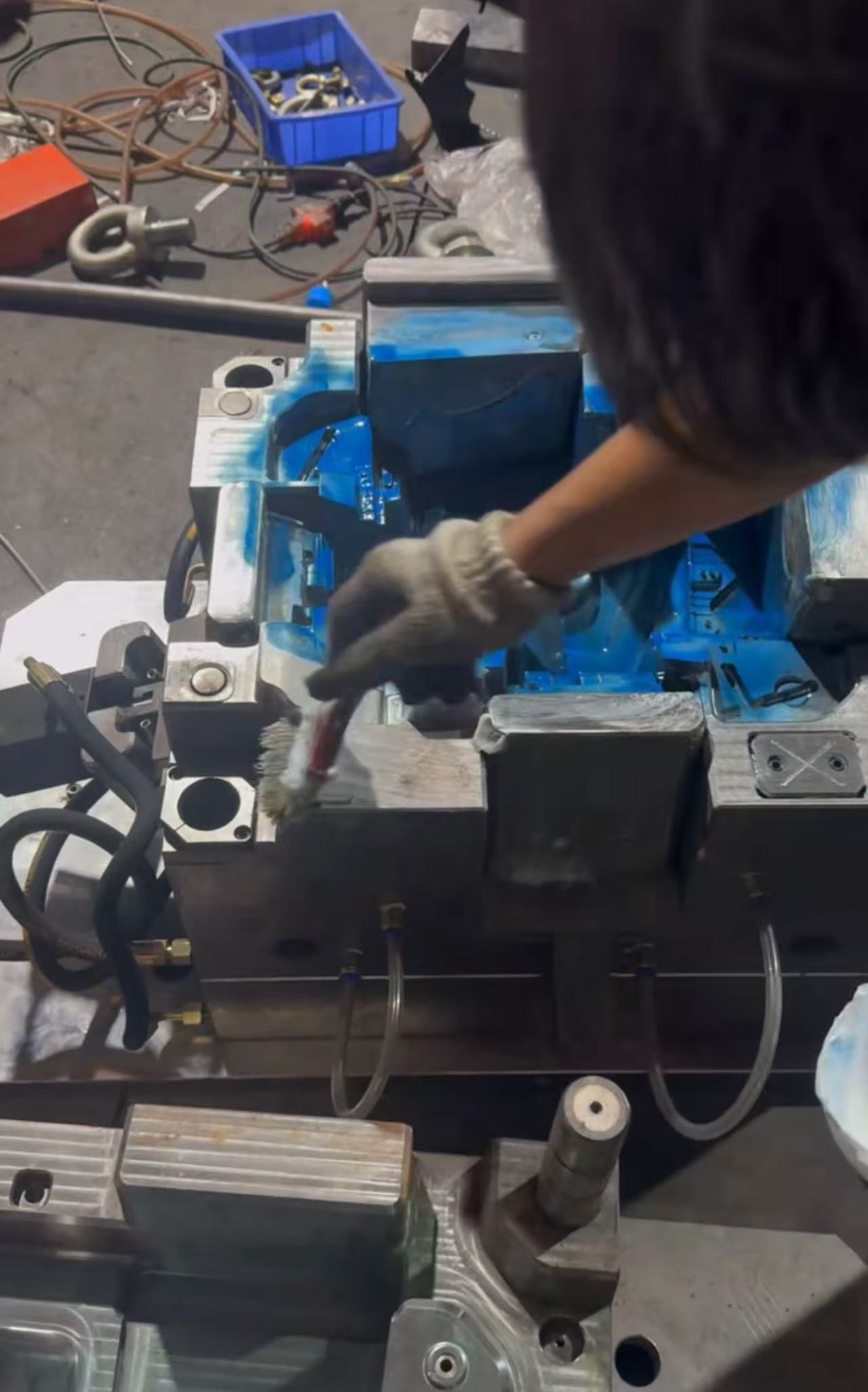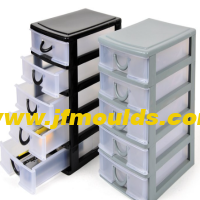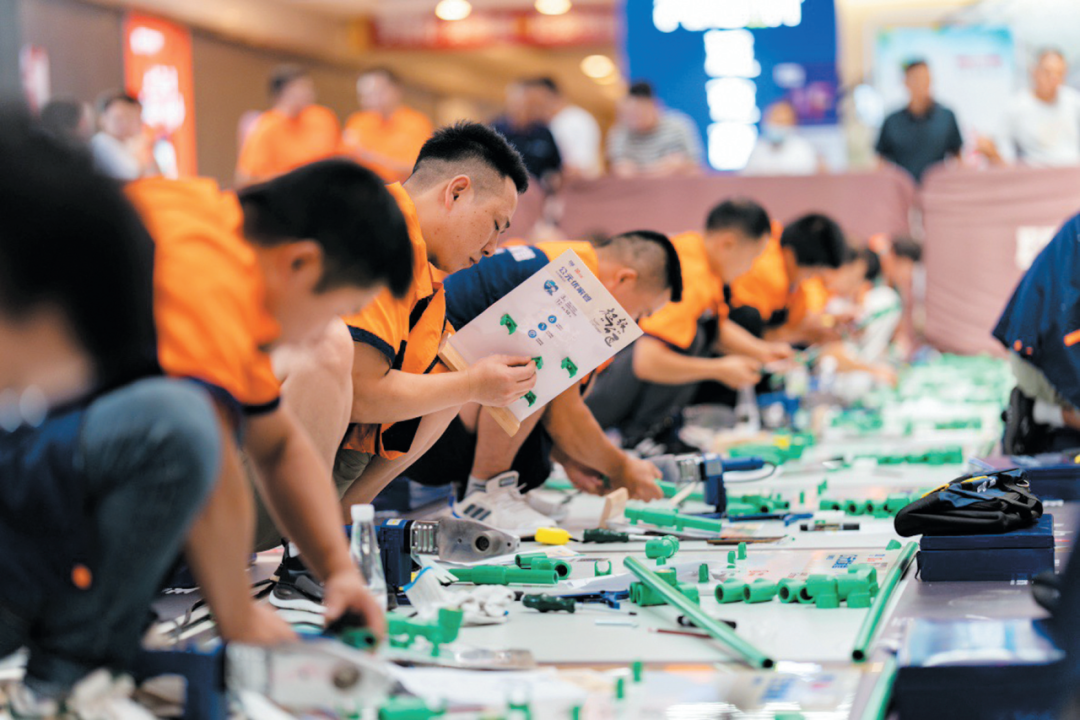In-depth Insights into the Injection Mold Industry: Technological Iteration, Market Landscape, and New Paradigms for Sustainable Development
In-depth Insights into the Injection Mold Industry: Technological Iteration, Market Landscape, and New Paradigms for Sustainable Development
I. Global Industrial Landscape: Shift of Focus and Regional Competition and Cooperation
(1) "Rebalancing" of the Manufacturing Focus
Over the past decade, the injection mold industry has undergone a shift from "cost-driven" to "dual-driven by technology and cost". The industrial clusters represented by Taizhou and Dongguan in China have been continuously rising in the market share of medium and high-end molds, relying on "full industrial chain support + engineer dividends + flexible manufacturing capabilities". In 2023, the export value of molds from Taizhou increased by 18% year-on-year, with the proportion of automotive molds exceeding 35%, breaking the long-term technological barriers of Germany and Japan in this field.
In contrast, traditional mold powerhouses, Germany, have seen high costs for small and medium-sized orders due to "excessive investment in automation" during its Industry 4.0 transformation. Japan, affected by an aging population, has a 20% shortage of mold technicians, and its market share is being eroded by emerging manufacturing entities such as China and Vietnam. However, it is worth noting that Germany still maintains an absolute technological edge in aerotive-grade ultra-precision molds (tolerance < 0.005mm), and Japan in optical lens molds (surface roughness Ra < 0.01μm), thus forming a new global competitive pattern of "high-end throat locking and mid-range flow splitting".
(2) Demand Differentiation in regional markets
North American market Due to the explosive growth of new energy vehicles (such as Tesla and Rivian) and medical equipment (like Boston Scientific), the demand for long-life and quick-change injection molds has soared. The order volume in Q1 2024 increased by 22% compared to the same period last year. And they are willing to pay a premium (on average 15% - 20%) for the one-stop service of "mold + mass production contract manufacturing".
European market Driven by environmental protection regulations (such as REACH and the upgraded version of ROHS 2.0), the technical requirements for biodegradable material molds (such as PLA and PHA injection molds) are strict. The surface treatment of molds must meet the dual standards of "no chemical residues + resistance to biological corrosion", which has given rise to a joint development model of "mold design + material research and development".
Southeast Asian market With the expansion of electronic contract manufacturers (such as Samsung's Vietnam factory and Xiaomi's Indonesia base), there is a strong demand for high cost-performance standard mold bases and fast delivery. Chinese mold enterprises have achieved a "72-hour mold delivery circle" by setting up bonded warehouses in Vietnam and assembly lines in Thailand. Although the average price of molds exported to ASEAN decreased by 8% in 2023, sales increased by 37%. It presents the characteristics of "thin profit but high sales volume + market penetration".
Auto Mould_Taizhou Jiefeng Mould Co.,Ltd. (jfmoulds.com)
Ii. Technological Innovation: Four Core Trends Reshaping the Mold Industry
(1) Intelligent Molds: From "Passive Response" to "Active Evolution"
Traditional molds are production tools, while intelligent molds have become "data terminals + decision-making nodes". By embedding pressure sensors, temperature sensors, and strain gauges (such as the German HBM micro-sensors that can be integrated into a 5mm thick mold core) within the mold, over 200 process parameters during the injection molding process can be collected in real time. Combined with AI algorithms (such as the process prediction model trained by TensorFlow), it achieves:
Defect prediction: Issue early warnings three cycles before defects such as flash and short shot occur, reducing the defect rate to below 0.5% (the defect rate of traditional molds is about 3% - 5%).
Self-optimized parameter adjustment: Automatically adjust the holding pressure and cooling time based on the batch fluctuations of materials (such as PP melt index deviation ±0.5g/10min), improving process stability by 40%.
Life prediction: Based on the digital twin model of mold wear, accurately predict the remaining life of the mold cavity and slider, reducing mold maintenance costs by 25%.
Typical case: Haier Mould customized a smart refrigerator drawer mold for a certain home appliance enterprise. By directly connecting the in-mold sensors with the factory's MES system, the entire process from "order placement to finished product delivery" was fully unmanned, increasing production efficiency by 30% and reducing the comprehensive mold cost by 22%.
(2) Material Revolution: The "New Battlefield" Breaking Through Performance Boundaries
Mold materials have shifted from "reliance on a single steel grade" to a composite innovation of "composite materials + functional coatings" :
Base material: The third-generation powder high-speed steel (such as the upgraded version of ASP-60), with a more uniform carbide distribution, maintains hardness (HRC 62-64) while increasing toughness by 30%, and the mold life (in PA6 + 30%GF injection molding) exceeds 500,000 mold cycles. Aluminum matrix composites (Al-SiC) have seen their application rate in thin-walled injection molds (such as mobile phone case molds with a wall thickness of 0.5mm) increase to 18% due to their lightweight (with a density only 1/3 that of steel) and fast thermal conductivity (with a thermal conductivity of 150W/m·K, three times that of steel).
Surface treatment: Diamond coating (such as chemical vapor deposition CVD diamond) increases the surface hardness of the mold to 10,000HV, and the wear resistance is enhanced by 10 times. In high-temperature engineering plastic injection molding such as LCP (liquid crystal polymer), the mold life has jumped from 50,000 cycles to 300,000 cycles. Nano-ceramic coatings (such as Al₂O₃ -TiO ₂ composite coatings) achieve "self-lubrication + chemical corrosion resistance". In the injection molding of fluoroplastics (such as PTFE), the demolding force is reduced by 60%, solving the long-standing "sticking" problem that has plagued the industry.
(3) Additive Manufacturing: A "Disruptive Supplement" to Mold Manufacturing
3D printing has moved from "prototype verification" to the "mold mass production" stage. Technologies represented by SLM (Selective Laser Melting) and MJF (Multi-Jet Melting) have achieved three major breakthroughs in mold manufacturing:
Conformal cooling water channel: The traditional drilled water channel has a low cooling efficiency (mold temperature difference ±5℃). The 3D printed conformal water channel can make the mold temperature difference ≤1℃, shortening the injection molding cycle by 20% - 30%. Through the design of the conformal water channel, the production cycle of a certain automotive lampshade mold was reduced from 45 seconds to 32 seconds.
Complex structure integration: The "hollow slider + nested insert" structure without the need for splicing reduces the number of mold parts by 40% and shortens the assembly time by 50%. For example, in the medical syringe push rod mold, the original 12-part slider assembly is formed in one piece after 3D printing.
Rapid mold repair: When a product is iterated, 3D printing can complete local mold modification in just 24 to 48 hours, with a cost that is only one-third of that of traditional electrical discharge mold repair. The new product iteration cycle of a certain consumer electronics enterprise has been compressed from 3 months to 45 days.
However, it should be viewed objectively: At present, 3D printed molds are still limited in the fields of large size (> 1m molds) and ultra-high precision (tolerance < 0.01mm), and the cost of printing materials (such as nickel-based alloys and titanium alloys) is 5 to 8 times that of traditional mold steel. In the short term, it is a "supplement to traditional manufacturing" rather than a "replacement".
(4) Sustainable Molds: A "Must-Answer Question" for Green Transformation
The global carbon neutrality goal is compelling the mold industry to adopt a dual-track approach of "carbon reduction and recycling" :
Carbon reduction at the manufacturing end: The adoption of dry cutting (replacing emulsion cooling) reduces carbon emissions in the mold processing stage by 40%. The EcoTurn machine tool series launched by German DMG MORI reduces carbon emissions by 1.2 tons per machine tool per year by optimizing cutting parameters and cooling systems. The lightweight design of molds (such as the use of aluminum alloy mold bases and hollowed-out inserts) reduces raw material consumption by 15% to 20%, and at the same time lowers the demand for clamping force of injection molding machines (for every 100kg reduction in mold weight, the energy consumption of injection molding machines is reduced by 3%).
Loop end innovation The mold Remanufacturing industry has emerged. Through the process of "inspection - repair - upgrade", the performance of used molds can be restored to over 90% of that of new molds, with the cost being only 50% to 70% of that of new molds. The number of mold remanufacturing orders on the Xometry platform in the United States increased by 55% in 2023. Bio-based mold materials (such as polylactic acid (PLA) -based composites) account for up to 10% of low-load molds (such as stationery and toy molds), and their life cycle carbon emissions are 65% lower than those of traditional plastic molds.
Motorcycle Mould_Taizhou Jiefeng Mould Co.,Ltd. (jfmoulds.com)

Iii. The Breakthrough Path for Chinese Mold Enterprises: Opportunities and Challenges
(1) Technological Breakthrough: The Crucial Battle from "Following" to "Leading"
Chinese mold enterprises have achieved technological leadership in fields such as new energy vehicle battery tray molds (large-scale + integrated), 5G base station shell molds (thin-walled + high-rigidity), and photovoltaic frame molds (weather-resistant + low-cost).
Battery tray mold: NIO's 1500mm×2000mm super-large integrated battery tray mold adopts a "molding + injection molding" composite process, reducing the weight of the tray by 25% and increasing production efficiency by 40%, breaking the foreign monopoly on molds for large structural components.
5G base station mold: The 0.8mm wall thickness base station shell mold developed by Huawei's supplier, through the "air-assisted injection molding + in-mold decoration (IMD)" technology, realizes the integrated molding of appearance parts and structural parts, increasing the yield rate from 60% to 92%.
Photovoltaic frame mold: The ASA co-extruded photovoltaic frame mold developed by the supporting mold enterprise of Tongwei Co., Ltd. has solved the pain points of traditional PVC frames such as "poor weather resistance and difficult recycling". The mold life (under outdoor ultraviolet irradiation environment) has exceeded 80,000 mold times, promoting the recycling rate of photovoltaic modules to increase to 85%.
(2) Brand Building: Breaking Away from the cognitive battle of the "low-cost Label"
For a long time, the overseas perception that "Chinese molds = low price and low quality" urgently needs to be reversed. Leading enterprises are reshaping their brands through a combination of "technology patents + industry standards + benchmark cases"
Patent layout: The mold division of Haitian International has cumulatively applied for over 800 patents, among which more than 20 patents such as "Multi-Component Injection Molding Synchronous Forming Technology" have filled international gaps.
Standard formulation: Participated in the formulation of 10 international standards such as ISO 20430 "General Technical Requirements for Plastic Injection Molds", and incorporated "Chinese process parameters" into global guidelines;
Case output: The Watch band molds provided to Apple's supply chain achieved a "0.05mm tolerance + 500,000 mold life", setting a benchmark for mold quality in the consumer electronics field and driving a 30% increase in brand premium.
(3) Supply Chain Security: Tackling the "Bottleneck" Links
Although China's mold industry accounts for 40% of the global scale, it still relies on imports in high-end mold steel (such as Dievar steel from SSAB in Sweden), precision hot runner systems (such as Husky in the United States), and micro-sensors (such as HBM in Germany), highlighting supply chain risks. The paths to break the deadlock include
Material autonomy: The "RH refining of die steel + electroslag remelting" process developed by Baosteel Special Steel has brought the performance of domestic DC53 steel close to that of similar products from Daido Steel of Japan, and it has been applied in batches in 3C molds.
Core component substitution: The hot runner system independently developed by Haitian Plastic Machinery has a flow control accuracy of ±1% (±0.5% at the international first-class level), and its substitution rate in the mid-range mold market exceeds 60%.
Industry-university-research collaboration: The State Key Laboratory of Mold Technology at Huazhong University of Science and Technology and Dongguan Jingsheng Intelligent jointly established the "Precision Mold Joint Research and Development Center", overcoming the "micron-level mold surface Texching" technology, which has improved the mold demolding performance by 50%.
Iv. The Next Five Years: Six Predictions for Industrial Evolution
1.The "mold-as-a-Service" model has exploded: Mold enterprises have shifted from "selling products" to "selling production capacity + selling technology + selling data", such as providing a full-cycle Service of "mold leasing + charging per mold + process management", which has been first implemented in fields like medical care and auto parts.
2. The "cross-industry technology integration" is accelerating: Drawing on the "topology optimization" of aerospace and the "bionic design" of biomedicine, mold structures will become lighter and more functional. For instance, the mold for automotive bumpers that imitates the honeycomb structure will reduce its weight by 35% while increasing its strength by 20%.
3. The rise of "regional mold ecosystem" : Besides Taizhou and Dongguan, the Chengdu-Chongqing region (relying on the automotive industry) and the northern wing of the Yangtze River Delta (Nantong and Taizhou, connecting with Shanghai's high-end manufacturing) will form new growth poles for the mold industry, with the supporting rate within the region increasing to over 80%.
4. "AI Full-chain Penetration" : From mold Design (Generative Design for automatically generating the optimal structure), manufacturing (AI production scheduling + tool path optimization) to operation and maintenance (predictive maintenance), AI makes it possible to increase the efficiency of the mold industry by 50%.
5. "Technological Reshuffling driven by environmental protection regulations" : The EU's "carbon border tax" and the US "Clean Manufacturing Act" will eliminate a batch of small and medium-sized mold enterprises that fail to meet environmental protection standards, raising the industry concentration (CR10) from the current 15% to over 30%.
6. "Reshaping the talent structure" : The collaboration between mold technicians and algorithm engineers as well as material scientists has become routine. There is a shortage of 500,000 compound talents in "mold + digitalization + new materials", and the reform of vocational education (such as the localization of the German dual system) is extremely urgent.
V. "Long-termism" in the Mold Industry
Injection molds, as the core link of the "mother of industry", have long surpassed the scope of "tool manufacturing" in their development, becoming a comprehensive manifestation of a country's manufacturing competitiveness, technological innovation capacity, and sustainable development ability. Only by adhering to "in-depth technological development + brand upgrading + ecological co-construction" can China's mold industry take the initiative in the global industrial restructuring and move from a "major mold country" to a "powerful mold country". In the future, every milling mark on a mold will bear the era's imprint of China's manufacturing industry's upgrading.
Related News
Solutions to the uneven surface of the mold, the whitening of the bone position due to trapped air, the air lines at the glue entry points, and the lack of glue
2025-08-25
Solutions to the uneven surface of the mold, the whitening of the bone position ...
The solution to the obvious flash and ejector pin marks at the water passage position of the mold
2025-08-10
The solution to the obvious flash and ejector pin marks at the water passage pos...
Exhaust the breathable steel of the mold
2025-10-17
Exhaust the breathable steel of the mold Permeable steel is a sintered allo...
Solutions to wire clamping, surface indentation and punch marks in molds
2025-08-14
Solutions to wire clamping, surface indentation and punch marks in moldsThe clam...
Surface roughness of plastic parts and selection of injection molding machines
2025-09-18
Surface roughness of plastic parts and selection of injection molding machines1....
Huangyan: Building a
2025-06-22
Huangyan District of Taizhou City is known as the "hometown of moulds in China"....





